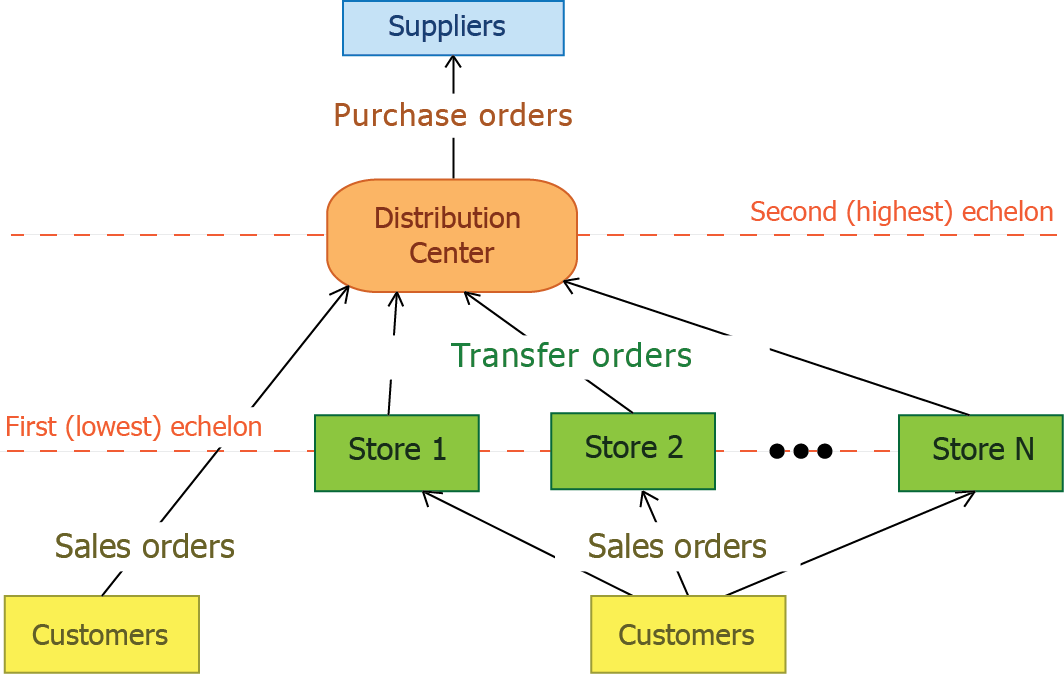User Guide
1. Streamline Client
2.Streamline Server
3. Starting Up
4. Connecting data
5. Demand and Sales Forecasting
6. Inventory Planning
7. Reference
1. Streamline Client
2.Streamline Server
3. Starting Up
4. Connecting data
5. Demand and Sales Forecasting
6. Inventory Planning
7. Reference
 Add this page to your book
Add this page to your book  Remove this page from your book
Remove this page from your book In this article, we explain how Streamline calculates a DC ordering plan for planning items that are distributed in this DC. These items are shown on the Distribution center tab.
Consider an example of a two-echelon model represented in the figure below.

In the example, an item is distributed over N stores from a distribution center. In addition to the distribution, DC sells this item to customers.
To calculate a DC ordering plan for such an item, Streamline performs two steps:
1. First, it calculates ordering plans for this item for N locations at the lowest echelon based on the sales forecasts. This gives us N Ordering plans which form a part of DC demand at the highest echelon.
2. Then, the DC ordering plan is calculated using the Excel-like formulas below.
DC order qty1 = MAX(CEILING( MAX(0, D_salesOC + DOC + DC safety stock + Qty_to_shipLT,OC - Remaining + Debt_accumulated), DC rounding), DC min lot), (1)
Remaining = MAX(0, MAX(0, DC on hand) + Qty_to_receiveLT,OC - (D_salesLT + DLT) ),
,
Where:
j = 1, …, N – the ordering plans calculated for the item at the lowest echelon (see Step 1). These are shown in the Ordering plan section on the Inventory planning tab.The calculated DC order qty1 is shown in the Qty column of the Current order section on the Distribution center tab.
Formula (1) determines the quantity to order for the first DC order cycle. To calculate replenishment quantities for next order cycles, the following Excel-like formula is used:
DC order qty1 = MAX(CEILING( MAX(0, D_sales(OCi) + D(OCi) + DC safety stocki + Qty_to_ship(OCi) - Qty_to_receive(OCi) - Remainingi), DC rounding), DC min lot), (2)
.
Where:
i-th DC order cycle. If the DC doesn't sell the item, this term equals zero.i-th DC order cycle.j = 1, …, N – the ordering plans calculated for the item at the lowest echelon (see Step 1).i-th DC order cycle.i-th DC order cycle.